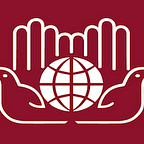No Safe Harbor: An Exhibition on Sex Trafficking in the United States
New York — Domestic sex trafficking in the United States is a nationwide endemic — a form of modern-day slavery that entraps thousands. Traffickers target victims, often teenagers and young women, who are homeless, live in foster care, or have a history of childhood sexual abuse. Victims are forced and coerced to work on the streets, but also in hotels, apartments, truck stops and strip clubs where the crime is largely undetected.
As a $99 billion global illicit industry, sex trafficking flourishes due to high demand and lack of accountability for the buyers and pimps who perpetuate this grave injustice — one which we have a humanitarian obligation to end.
The Institute of International Humanitarian Affairs presents No Safe Harbor — an illumination on this harsh reality by Getty Images photographer Robert Nickelsberg. The exhibition, opening at Fordham University Rose Hill in Canisius Hall on April 5, highlights domestic sex trafficking through a variety of angles: women and girls trapped in a cycle of exploitation; traffickers and johns who fuel the trade; advocates and law enforcement officials tackling the problem; and survivors who have had the chance to start a new life.
“Domestic sex trafficking remains a poorly understood public health concern. I’d like to see a qualitative change in public awareness of domestic sex trafficking, its underlying causes and misconceptions about women who fall victim to sexual exploitation, coercion and violence. Society in general remains ill-equipped to deal with maintaining adequate funding for child welfare officers, the retraining of law enforcement officers and an improved justice system.
Members of the public remain unaware of the number of women and men who are victims of domestic violence and sexual assault that often leads to prostitution and sex trafficking. Our social services safety net has failed to recognize and act upon the breadth and extent of the causes that force individuals into sex trafficking. The causes rather than the crime cannot be overlooked and left to be solved by law enforcement officials,” said Nickelsberg.
In the United States, between 244,000 and 300,000 American children are at risk of commercial sexual exploitation, according to Polaris Project. In 2008, New York became the first state in the country to pass a Safe Harbor Law that prohibits the prosecution of children who have been sexually exploited.
Even so, victims are arrested at much higher rates than buyers and traffickers. Additionally, victims of trafficking above the age of 18 are still culpable for prostitution-related offenses, even if they were first forced into the illicit industry as children and are entrapped in a vicious cycle of control.
With criminal charges and the associated social stigmas, women struggle to find living-wage jobs or new opportunities. Although social service agencies attempt to serve those who manage to escape with housing, education, psychosocial support, and a semblance of protection, the safety net for survivors fails most.
“I was affected by the survivor’s narrative related to their childhood experiences, their vulnerability and traumatic circumstances they lived through as teenagers before they were pulled into commercial sex trafficking. From the law enforcement side, the major impact for me was the number of women I photographed who are put onto the street each day and the need for trained police officers who understand that the women arrested are not criminals but victims,” said Nickelsberg.
Jasmine Marino, a survivor featured this exhibition, is dedicated to advocating for “comprehensive programs where victims can become true survivors and leaders in the movement if that’s what they choose. A safe place where they can start to dream again and create the life they imagined as little girls…where community is valued and healthy relationships are encouraged.”
The Institute of International Humanitarian Affairs presents these photos to echo Jasmine’s call and encourage dialogue on commercial sexual exploitation in the United States. This shamefully neglected humanitarian tragedy implores all facets of society — from academia, to law enforcement, to social services — to respond with justice.
We invite members of the Fordham community to the exhibition opening on April 5th from 4 PM to 6 PM and a panel discussion with advocates and Robert Nickelsberg on April 24th at 6:30 PM. Registration for both is now open on Eventbrite.
The exhibition is open for viewing from Monday to Friday, 10 AM to 4 PM in Canisius Hall (2nd floor) at Fordham University Rose Hill.
Angela Wells, IIHA Communications Officer
